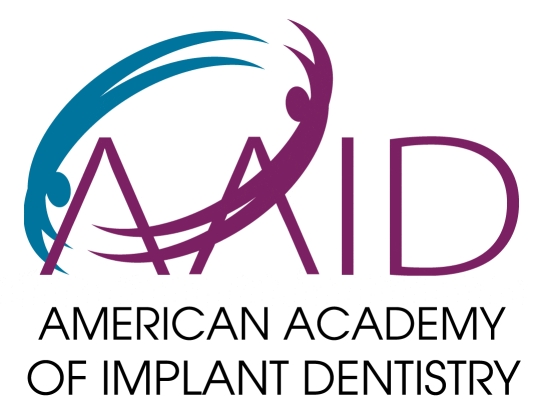Invisalign right for your child depends on several factors including age, dental development stage, and specific orthodontic needs, with most children being suitable candidates once their permanent teeth have fully erupted, typically around ages 12-14. At Lansdowne Family Dental, with over 15 years of experience in pediatric dentistry and orthodontics serving families throughout Ashburn, Leesburg, and Lansdowne Virginia, we frequently help parents navigate this important decision about whether Invisalign treatment is appropriate for their growing child’s unique dental situation.
The decision about Invisalign for children requires careful consideration of multiple developmental and practical factors:
- Dental maturity – All permanent teeth should be fully erupted before starting treatment
- Responsibility level – Children must demonstrate ability to wear and care for aligners consistently
- Compliance requirements – Success depends on wearing aligners 20-22 hours daily
- Treatment complexity – Some orthodontic issues may require traditional braces instead
Many parents are curious about Invisalign treatment for their children, particularly when their little ones still have baby teeth, but understanding the optimal timing for orthodontic intervention is crucial for treatment success. While Invisalign offers significant advantages for appropriate candidates, determining readiness involves evaluating both physical dental development and emotional maturity.

This comprehensive guide will explore child dental development stages, the specific timing considerations for Invisalign treatment, age-appropriate orthodontic options, and help you determine whether this innovative clear aligner system is the right choice for your child’s growing smile.
Understanding Tooth Development in Children: A Closer Look
Before we explore Invisalign candidacy, it’s crucial to have a thorough understanding of the natural process of tooth development in children. This knowledge forms the foundation for making informed decisions about orthodontic treatment.
The Journey from Baby Teeth to Permanent Teeth
- Baby Teeth (Primary Teeth):
- Eruption typically begins around 6 months of age
- There are 20 baby teeth in total
- These teeth are smaller and have thinner enamel than permanent teeth
- Designed for a child’s softer diet and smaller jaw
- Usually fully erupted by age 3
- Play a crucial role in speech development, proper nutrition, and guiding permanent teeth into place
- Permanent Teeth:
- Begin to emerge around age 6-7
- There are 32 permanent teeth in total (including wisdom teeth)
- Stronger and designed to last a lifetime with proper care
- Continue to erupt until all baby teeth are replaced, usually by age 12-13
- Wisdom teeth typically emerge between ages 17-21
The Natural Process of Tooth Replacement: A Timeline
The transition from baby teeth to permanent teeth is a gradual process that follows a general pattern:
- Ages 6-7: Lower central incisors and first molars begin to emerge
- Ages 7-8: Upper central incisors erupt
- Ages 8-9: Lower and upper lateral incisors emerge
- Ages 9-11: First premolars (bicuspids) erupt
- Ages 10-12: Second premolars and canines emerge
- Ages 11-13: Second molars erupt
- Ages 17-21: Third molars (wisdom teeth) may emerge
It’s important to note that this timeline can vary significantly from child to child. Factors such as genetics, nutrition, and overall health can influence the timing of tooth eruption.
Invisalign and Permanent Teeth: A Detailed Examination
Now that we’ve established a solid understanding of tooth development, let’s address the main question: Can a child be a candidate for Invisalign if their permanent teeth haven’t grown in yet?
The Comprehensive Answer
In most cases, we at Lansdowne Family Dental recommend waiting until all or most permanent teeth have erupted before considering Invisalign treatment. Here’s a detailed explanation of why:
- Complete Tooth Set:
- Invisalign is designed to work with a full set of permanent teeth.
- The aligners are custom-made based on a complete dental arch.
- Treating before all permanent teeth have erupted could lead to unpredictable results.
- Predictable Movement:
- Permanent teeth allow for more predictable and stable tooth movement.
- The roots of permanent teeth are fully formed, providing a stable anchor for movement.
- Baby teeth have shorter roots and are designed to fall out, making them less suitable for orthodontic movement.
- Growth Considerations:
- We need to account for jaw growth and development, which is more predictable once permanent teeth are in place.
- The adolescent growth spurt, which typically occurs around ages 11-13 for girls and 13-15 for boys, can significantly impact orthodontic treatment.
- Treatment Efficiency:
- Starting Invisalign with a full set of permanent teeth often leads to more efficient treatment.
- Fewer adjustments are typically needed compared to treating a mixed dentition (combination of baby and permanent teeth).
- Long-term Stability:
- Waiting for permanent teeth ensures that the final result is based on the teeth that will be present for life.
- This approach helps minimize the need for potential retreatment in the future.
Exceptions and Early Interventions: When to Consider Early Treatment
While we typically recommend waiting for permanent teeth, there are some situations where early orthodontic intervention might be beneficial:
- Severe Crowding:
- If we anticipate significant crowding issues, early intervention might help guide tooth eruption.
- This could involve the use of expanders or other appliances to create space for permanent teeth.
- Bite Problems:
- Certain bite issues can be addressed early to prevent more complex problems later.
- Examples include crossbites, severe overbites, or underbites that affect jaw growth.
- Habits:
- Early treatment might be recommended to address harmful habits like thumb-sucking or tongue thrusting.
- These habits can lead to dental and skeletal changes if not addressed early.
- Aesthetic Concerns:
- In some cases, early treatment may be considered to address significant aesthetic issues that are affecting a child’s self-esteem.
- Injury Prevention:
- Protruding front teeth may benefit from early treatment to reduce the risk of dental trauma.
In these cases, we might use other orthodontic appliances before considering Invisalign. These could include:
- Palatal expanders
- Space maintainers
- Limited braces (on just a few teeth)
- Functional appliances to guide jaw growth
What to Do If Your Child’s Permanent Teeth Aren’t Coming In: A Step-by-Step Guide
If you’re concerned about your child’s tooth development, here are some detailed steps you can take:
- Monitor the Situation:
- Keep a tooth eruption chart to track your child’s progress.
- Note the dates when baby teeth fall out and permanent teeth emerge.
- Look for signs of loose baby teeth, which indicate permanent teeth are preparing to erupt.
- Schedule a Dental Appointment:
- If your child is over 8 years old with no permanent teeth erupting, it’s time for a check-up.
- We recommend bi-annual dental visits for children, but don’t hesitate to come in sooner if you have concerns.
- At Lansdowne Family Dental, we can assess the situation through:
- A comprehensive oral examination
- Digital X-rays to visualize unerupted teeth
- 3D imaging in complex cases
- Be Patient:
- Remember, there’s a wide range of normal when it comes to tooth development.
- Slight delays (a few months) are often not cause for immediate concern.
- We’ll provide guidance on what’s normal for your child’s specific situation.
- Follow Professional Advice:
- If we recommend early intervention, follow the treatment plan closely.
- This may include at-home exercises, use of specific appliances, or dietary recommendations.
- Maintain Excellent Oral Hygiene:
- Proper care of baby teeth is crucial for the health of emerging permanent teeth.
- We’ll provide tailored hygiene instructions based on your child’s unique dentition.
Potential Reasons for Delayed Permanent Teeth Eruption: A Comprehensive Overview
Several factors can contribute to delayed permanent tooth eruption. Understanding these can help alleviate concerns and guide treatment decisions:
- Lack of Space:
- Baby teeth act as placeholders for permanent teeth.
- Premature loss of baby teeth can lead to space issues, delaying permanent tooth eruption.
- Overcrowding can also prevent permanent teeth from finding their proper place.
- Impacted Teeth:
- Permanent teeth can sometimes get stuck (impacted) due to:
- Lack of space in the jaw
- Unusual growth angles
- Presence of extra teeth (supernumerary teeth)
- Impaction is often diagnosed through X-rays.
- Permanent teeth can sometimes get stuck (impacted) due to:
- Genetics:
- Eruption timing can have a strong genetic component.
- If parents or siblings experienced delayed eruption, it may be normal for your child.
- Nutritional Deficiencies:
- Proper nutrition is crucial for tooth development.
- Deficiencies in calcium, vitamin D, or other essential nutrients can delay tooth eruption.
- We may recommend dietary changes or supplements if nutritional issues are suspected.
- Underlying Medical Conditions:
- Certain conditions can affect tooth development and eruption timing:
- Down syndrome
- Cleft lip and palate
- Hormonal imbalances (e.g., hypothyroidism)
- Certain rare genetic disorders
- Certain conditions can affect tooth development and eruption timing:
- Physical Obstruction:
- Cysts or tumors in the jaw (while rare) can obstruct tooth eruption.
- These are typically identified through imaging studies.
- Previous Dental Trauma:
- Injuries to baby teeth can sometimes affect the development of underlying permanent teeth.
- Ankylosis:
- In rare cases, a tooth can fuse to the surrounding bone, preventing normal eruption.
The Path to Invisalign: Preparing for Future Treatment
While your child may not be ready for Invisalign immediately, there are steps you can take to prepare for future orthodontic treatment:
- Regular Dental Check-ups:
- Maintain bi-annual visits to monitor tooth development.
- Early detection of issues can lead to simpler treatment later.
- Interceptive Orthodontics:
- We may recommend early interventions to guide tooth eruption and jaw development.
- This can potentially shorten or simplify future Invisalign treatment.
- Oral Hygiene Education:
- Instill good brushing and flossing habits now.
- Excellent oral hygiene is crucial for successful Invisalign treatment.
- Address Harmful Habits:
- Work on eliminating habits like thumb-sucking or tongue thrusting.
- These can affect tooth position and complicate future treatment.
- Nutritional Guidance:
- Ensure a balanced diet rich in calcium and vitamins.
- Proper nutrition supports healthy tooth development and overall oral health.
- Sports Safety:
- Use mouthguards during sports to prevent dental injuries.
- Traumatic injuries can complicate future orthodontic treatment.
- Digital Smile Planning:
- As your child’s permanent teeth emerge, we can start digital smile simulations.
- This helps in planning future Invisalign treatment and can be motivating for your child.
Conclusion: Personalized Care for Your Child’s Developing Smile
At Lansdowne Family Dental, we understand that every child’s dental development is unique. While Invisalign may not be immediately suitable for children whose permanent teeth haven’t fully grown in, we offer comprehensive orthodontic evaluations to determine the best course of action for your child’s specific needs.
Our approach involves:
- Thorough assessment of your child’s current dental development
- Consideration of family dental history
- Use of advanced imaging technologies for accurate diagnosis
- Creation of personalized treatment plans
- Ongoing monitoring and adjustment of strategies as your child grows
Remember, early diagnosis and intervention can be key to ensuring proper dental development. If you have any concerns about your child’s tooth eruption or are curious about future orthodontic treatment options, don’t hesitate to schedule an appointment with us.
We’re here to guide you and your child through every stage of dental development, from the first baby tooth to the final Invisalign tray. Our goal is to ensure a healthy, beautiful smile that lasts a lifetime. With patience, careful planning, and expert care, we can work together to achieve optimal dental health and alignment for your child, setting the stage for a confident smile for years to come.






